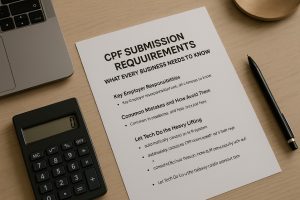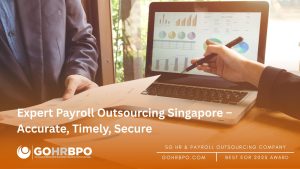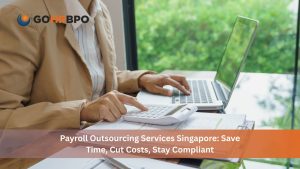Introduction
We all have seen the businesses grow and are still constantly growing. But when businesses grow, more and more people also become part of that growth.
It is, in fact, the people who build the business and keep it running, and I think it is really important for both the employers and the government to make sure that the future and the well-being of these people are taken care of.
One place that I know where this is done, really well, is Singapore. There, they have a CPF system to take care of their employees’ futures.
I even have a friend in Singapore who runs a business there, and he told me that when he started, one of the first things he had to learn about was CPF.
It stands for Central Provident Fund, and it is a savings scheme for employees. And as an employer, you have to contribute to it every month.
Your employee also contributes a part of their salary to CPF, as well. It is not just a rule; it also shows your employees that you care about their future and well-being.
So in this article, I will explain what CPF is and how the right tools can help you manage it without stress.

What is CPF, and Why Does it Matter?
Okay, now, let’s understand how CPF works. It is Singapore’s savings plan to help people pay for things like retirement, healthcare, and housing later on.
Every month, both the employee and the employer add some percentage of the employee’s pay. The amount depends on how old the employee is.
For young workers, like those who are 55 and under, the total CPF can go up to 37% of their pay.
It is not like everyone has to contribute to CPF. If you are hiring someone who is a citizen of Singapore or a permanent resident, and if their monthly salary is more than S$50, then you have to contribute to CPF. That is the law.
Let’s say you hire a part-time cashier who is earning around S$300 a month; you still need to pay CPF, but only the employer’s share is required.
Also Read: A Guide to Streamlining Agency Payroll Services in Singapore
Key Employer Responsibilities
If you are running a business in Singapore, there are a few CPF things you need to know about. First, make sure you submit your CPF payments on time, which is by the end of each month.
You get a 14-day grace period, by the way, but after that, you will have to pay interest on CPF as well.
Then there is the calculation part. You have to calculate it right. It is based on the employees’ ordinary wages (their regular salary) and additional wages (bonuses). The rates also depend on how old the employee is.
Also, don’t forget the paperwork. You need a CPF submission number (or CSN) to make your payments, and you also have to keep clear records for every employee.
One of my friends told me about a restaurant called Proper Pte Ltd that got fined S$8000 in 2024 for missing CPF payments. The CPF board takes this kind of stuff. Seriously, they publish these cases to warn others.
Common Mistakes and How to Avoid Them
You would be really surprised if I told you how many businesses get into trouble just because they might have made a small mistake with CPF. These small mistakes end up costing a lot.
You know what is one common issue? Misclassifying workers. Even if someone is doing part-time, working temporarily, or just helping out casually, you still need to pay CPF for them.
There are also cases where employers and employees agree not to pay CPF. Now, even when both sides are okay with it, it is actually not allowed. It is against the law.
There is also a problem with pro-rating. This means, if someone joins in the middle of the month, their CPF needs to be based on the pay they actually earned and not what they would have earned for the full month.
Also, don’t forget bonuses and one-off payments. These fall under additional wages, and CPF still needs to be paid on them, up to a certain limit.
The best way to avoid all this confusion? Automate it. Having a good system in place will help you stay compliant without any stress.
Also Read: 8 Reasons to Consider Payroll Outsourcing in Singapore
Let Tech Do the Heavy Lifting
Now, to make sure that CPF submission is error-free, the smartest thing a business can do is switch to a solid HR system, and PeopleCentral is one of the best options here in Singapore.
Here is what it helps with:
- It automatically calculates CPF contributions based on the latest rates, employee age, and salary, and you don’t need to calculate anything.
- It gives you the exact file format needed for e-submission via CPF EZPay. This way, you don’t need to waste time.
- It connects with GIRO or PayNow, which means payments will happen smoothly each month.
- It even spots errors before you submit, all thanks to the built-in AI that checks for anything unusual.
- Plus, every change is recorded with a full audit trail; this way, you always have proof if you ever need it.
This platform also stays updated with CPF board, IRAS, and MOM regulations, and you don’t have to.
Conclusion
So, to wrap things up, I will say that always make sure that your CPF submissions are accurate and on time because it is a big part of being a responsible employer in Singapore.
Make sure you make use of tools like PeopleCentral and handle all the tricky parts with these, and focus on running your business without worrying about compliance.






